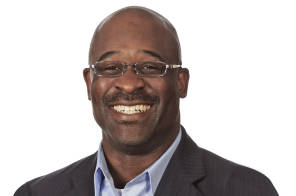2. The Need for a Workforce Diversity in Healthcare
One of the most powerful ways health systems can support diverse patients is by ensuring their workforces reflect the diversity of the communities they serve. Research shows that diverse patients (particularly Black men) experience better outcomes under the care of same-race providers. Local clinicians understand the needs, strengths, and challenges facing their communities, which helps them to provide culturally competent care. For example, they appreciate the difficulties a Latina bus driver might experience while quarantining for COVID-19 in her multigenerational household. This is a valuable perspective not only for providers and nurses but also for support staff and other hospital team members.
Workforce diversity starts with an honest look at recruiting practices at all levels of the organization. It means cultivating interest across wide demographic candidate pools and supporting talented minority professionals on pathways to leadership. I imagine that many of my white colleagues would be surprised by the loneliness I experience as a Black CEO. Ever since my first medical director job, I have often been the only person of color in the room at leadership meetings. In these situations, I sometimes hesitate to speak up, and when I do, I feel pressured to say something profound and brilliant. One way we can lead inclusively is to ensure that all voices at the table are heard and valued. Inclusion can also mean promoting a promising candidate even when they don’t have the most impressive resume, knowing that they may have had fewer opportunities to shine.
3. Mentoring a New Generation of Providers and Healthcare Leadership
I often talk to medical directors who are keen to hire diverse clinicians but can’t find enough of them. Black, Hispanic, and Indigenous people are grossly underrepresented in the physician workforce—and the situation appears to be getting worse, not better. Minority students pursuing medical careers face significant barriers, from racial bias to testing fees to interview costs. And that’s if they even make it that far.
More than anything, these diverse students need role models. They need to connect with doctors, physician assistants, and nurses who look like them and understand their difficulties and doubts. When I talk with high school students, they too often say things like, “I want to be a doctor, but I don’t think I’m good enough.” And in those cases, it’s powerful to share my struggles and offer hope for the journey.
Often, I will tell these youth about the mentors who helped me along my path. The truth is, none of us got into medicine without a team of supporters behind us, be they parents, teachers, professors, or practicing providers. That’s why mentoring—both professionally and within my local community—has become so central to my life’s mission. I have received so much value from those who went before that I can’t help but give back. And if you’re in a position to be a positive role model and mentor within your community, I encourage you to pursue the opportunity. It’s a wonderful feeling to see the difference it makes in someone’s life when you take the time to hear and guide them.
A New Awareness of Healthcare Disparities
Ending health disparities requires millions to lift their voices and pitch in with their hands. And yet I’m guardedly optimistic that change is here. The events of 2020 have illuminated systemic racism in all areas of life, including healthcare. I believe this awareness is shaping a new healthcare paradigm in which health systems move beyond their walls and extend care into communities. By offering services in places where people feel most comfortable receiving them, I believe we will take healthcare to a whole other level.
Vituity’s Commitment to Healthcare Justice
Vituity is committed to providing culturally competent care to the diverse communities we serve, as well as celebrating and amplifying minority voices so that we may continue our mission to increase representation, foster diverse leaders of the next generation, and create a more equal and just healthcare system.
In 2020, we established the Vituity Cares Foundation with a mission to eradicate healthcare disparities by mentoring youth, improving access, and addressing the social determinants of health. As president, I’m proud to be part of bridging the healthcare divide in ways that benefit future minority leaders. The Vituity Cares Foundation matches students in underrepresented communities nationwide with passionate and committed health professionals through formal mentorship programs. Already we’re seeing the hope and promise of a better future in the eyes of our youth, who now have a more straightforward path and helping hand to guide them toward their goals.
The goal of a more equitable healthcare future should be one we all share and play a role in obtaining. When we achieve this, and I don’t doubt that we will, our country’s healthcare system will be more inclusive and accessible to all.
For more perspectives of Vituity’s leading voice as a champion of healthcare equality, please click here.

























